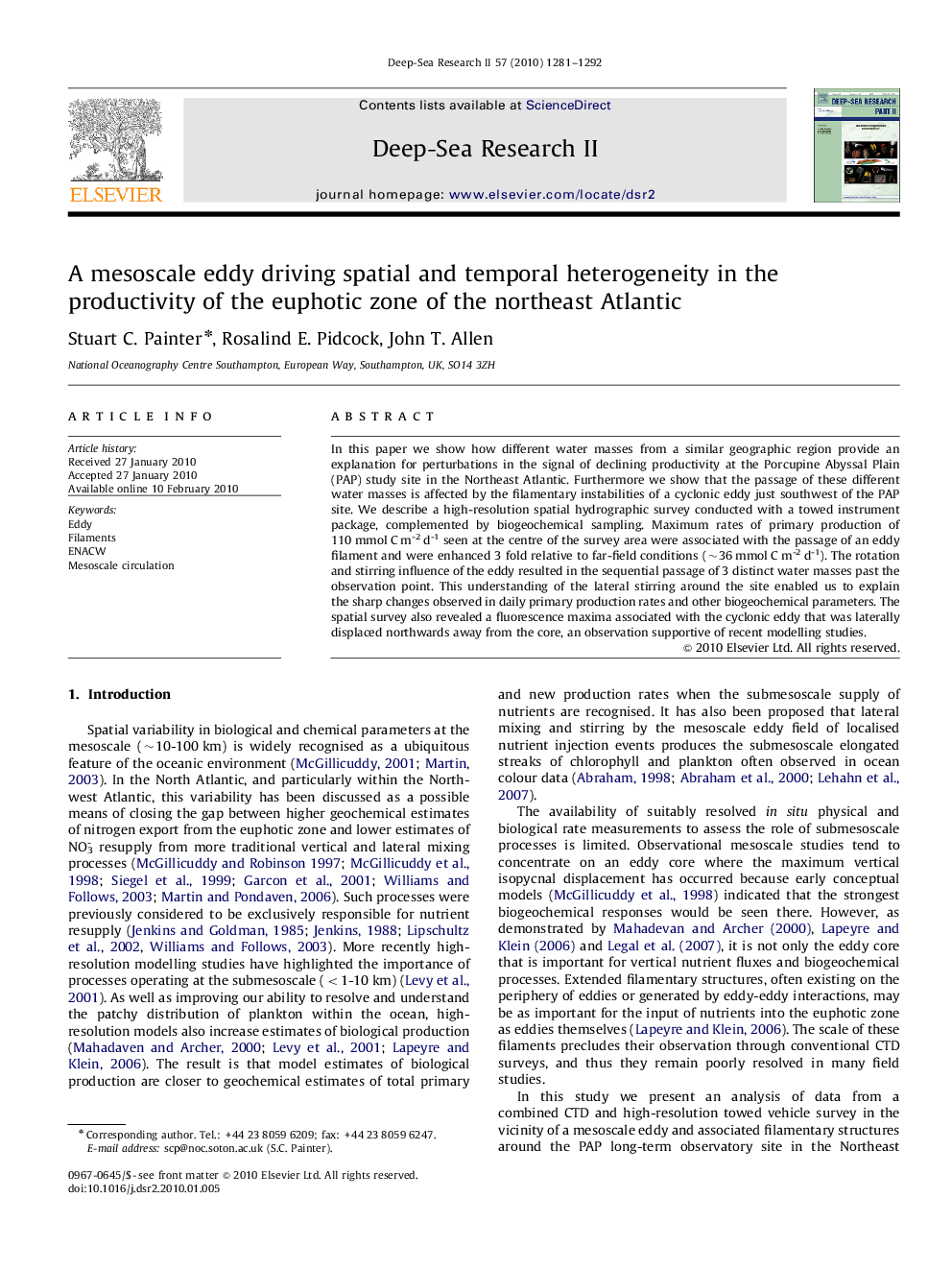| Article ID | Journal | Published Year | Pages | File Type |
|---|---|---|---|---|
| 4536953 | Deep Sea Research Part II: Topical Studies in Oceanography | 2010 | 12 Pages |
Abstract
In this paper we show how different water masses from a similar geographic region provide an explanation for perturbations in the signal of declining productivity at the Porcupine Abyssal Plain (PAP) study site in the Northeast Atlantic. Furthermore we show that the passage of these different water masses is affected by the filamentary instabilities of a cyclonic eddy just southwest of the PAP site. We describe a high-resolution spatial hydrographic survey conducted with a towed instrument package, complemented by biogeochemical sampling. Maximum rates of primary production of 110 mmol C m-2 d-1 seen at the centre of the survey area were associated with the passage of an eddy filament and were enhanced 3 fold relative to far-field conditions (â¼36 mmol C m-2 d-1). The rotation and stirring influence of the eddy resulted in the sequential passage of 3 distinct water masses past the observation point. This understanding of the lateral stirring around the site enabled us to explain the sharp changes observed in daily primary production rates and other biogeochemical parameters. The spatial survey also revealed a fluorescence maxima associated with the cyclonic eddy that was laterally displaced northwards away from the core, an observation supportive of recent modelling studies.
Keywords
Related Topics
Physical Sciences and Engineering
Earth and Planetary Sciences
Geology
Authors
Stuart C. Painter, Rosalind E. Pidcock, John T. Allen,
